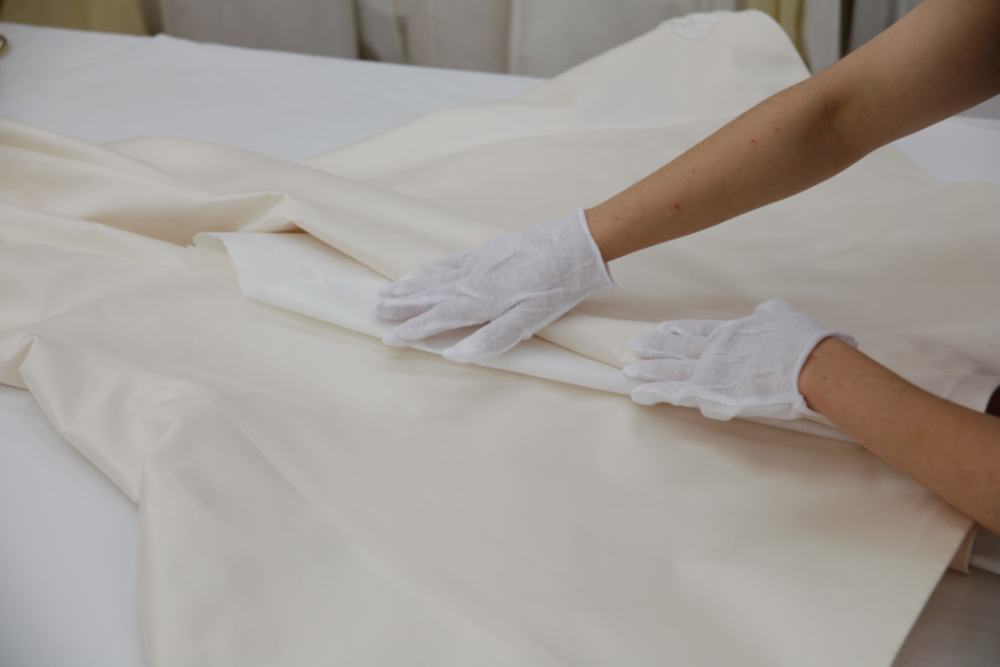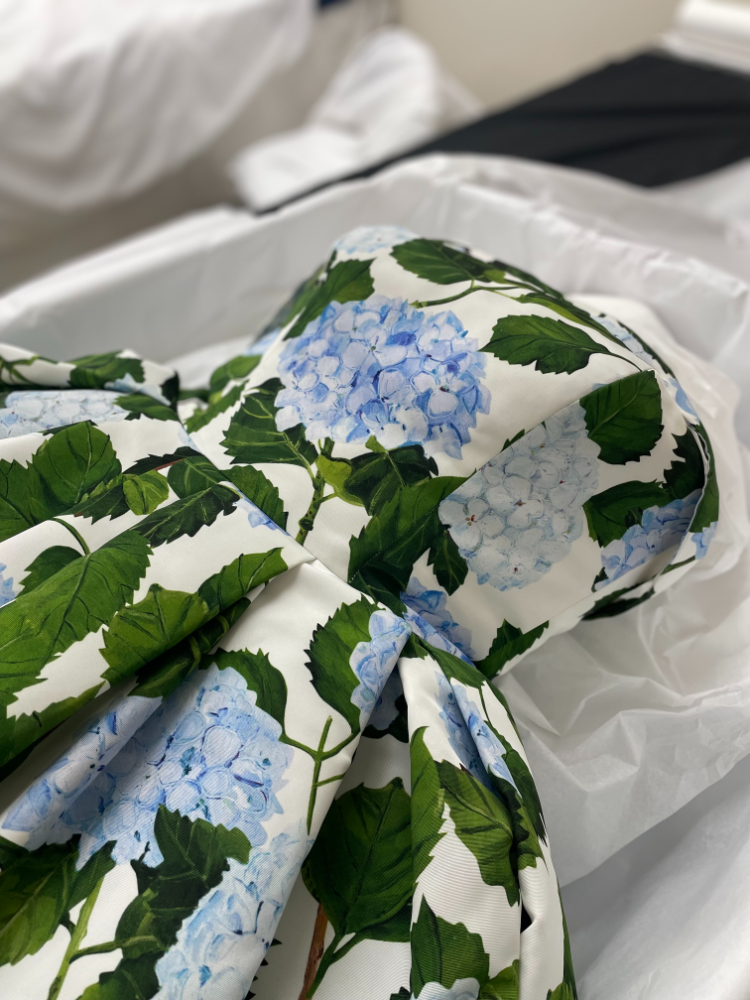Wedding Dress Preservation Services
We carefully fold and pad the garment to help prevent creasing, which can cause areas of weakness in the fabric over time. Folding the garment is necessary for practical storage, but we aim to limit and control the folds so that the garment is properly supported during storage. We support the folds of the garment with bumpers of acid-free tissue. We use a lighter weight of acid-free tissue to pad out sleeves and the bust. A heavier acid-free tissue is used as an outer wrapping.

Such sealed environments – bags, boxes, rigid plastic containers – trap humidity and acidity in the storage compartment which, when absorbed into the textile fibers, can lead to rapid oxidation of the fibers (yellowing) and allow for the growth of mold and mildew. We use archival boxes that are specifically designed for home storage, which is a less ideal environment than a museum.

The goal is to provide an environment for the textile that promotes both physical and chemical stability in a home environment for future generations. Our mission is to provide the most thoughtful and attentive care to textiles that will become important parts of our clients’ family cultural history.
